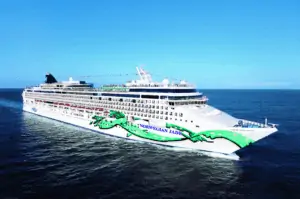According to the latest National Oceanic and Atmospheric Administration (NOAA) forecast, an “above-normal” Atlantic hurricane season is expected. The forecast predicts up to 25 storms, 13 hurricanes, and seven major hurricanes this year.

Cruisers scheduled for sailing from June 1 to November 30, or hurricane season, should be extra vigilant about the weather. According to NOAA’s recent findings, there is an 85% chance that we’ll be experiencing more hazardous weather in the Atlantic than in previous years.
During these six months, there are usually 14 named storms. This year, the agency anticipates between 17 and 25 of them. Compared to the average of seven hurricanes, there may be 8 to 13 hurricanes. Finally, we may experience 4 to 7 major hurricanes with wind velocities of at least 111 miles per hour instead of the average 3.
| Tropical Cyclones (Minimum Wind Velocity) | Average Number | Predicted Number for Hurricane Season 2024 |
| Named Storms (39 mph) | 14 | 17 – 25 |
| Hurricanes (74 mph) | 7 | 8 – 13 |
| Major Hurricanes (111 mph) | 3 | 4 – 7 |
Why are there more hurricanes this year?

NOAA attributes the above-average weather activity to four factors:
- Transition from El Niño to La Niña. Meteorological conditions from La Niña encourage hurricanes because it reduces wind shear, wind that suddenly travels in a different direction and speed compared to the general direction.
- Above-normal West African monsoon. The monsoon can create easterly waves that could lead to strong and extended storms over the Atlantic.
- Trade winds. Trade winds can become stronger and develop into strong hurricanes.
- Climate change. Warm water in the Atlantic and Caribbean oceans are ripe for hurricanes. Climate change also leads to higher sea levels, increasing the tendency for storm surges.
Which cruise destinations could be impacted by hurricanes?

It’s impossible to predict where these storms and hurricanes will make landfall. However, certain areas of the Caribbean are more prone to weather disturbances than others, especially from August to October.
The Western Caribbean, including Grand Cayman, Jamaica, and Cozumel destinations, typically experiences more hurricanes. In contrast, the Eastern Caribbean is often a better choice, as places like Puerto Rico, St. Maarten, and St. Thomas are known to have fewer hurricanes.
Keep in mind that this isn’t set in stone. Places like Bermuda, the Bahamas, Aruba, Bonaire, and Curacao also encounter storms.
Travelers during hurricane season should monitor the weather, buy travel insurance that covers weather-related events (it must be purchased before the storm is named), be flexible with their travel plans, and follow other practical advice.







![First Time Cruise to Europe + Cruise News [Podcast]](jpg/1681310099-msc-world-europa-maiden-call-genoa-italy-1-300x206.jpg)
